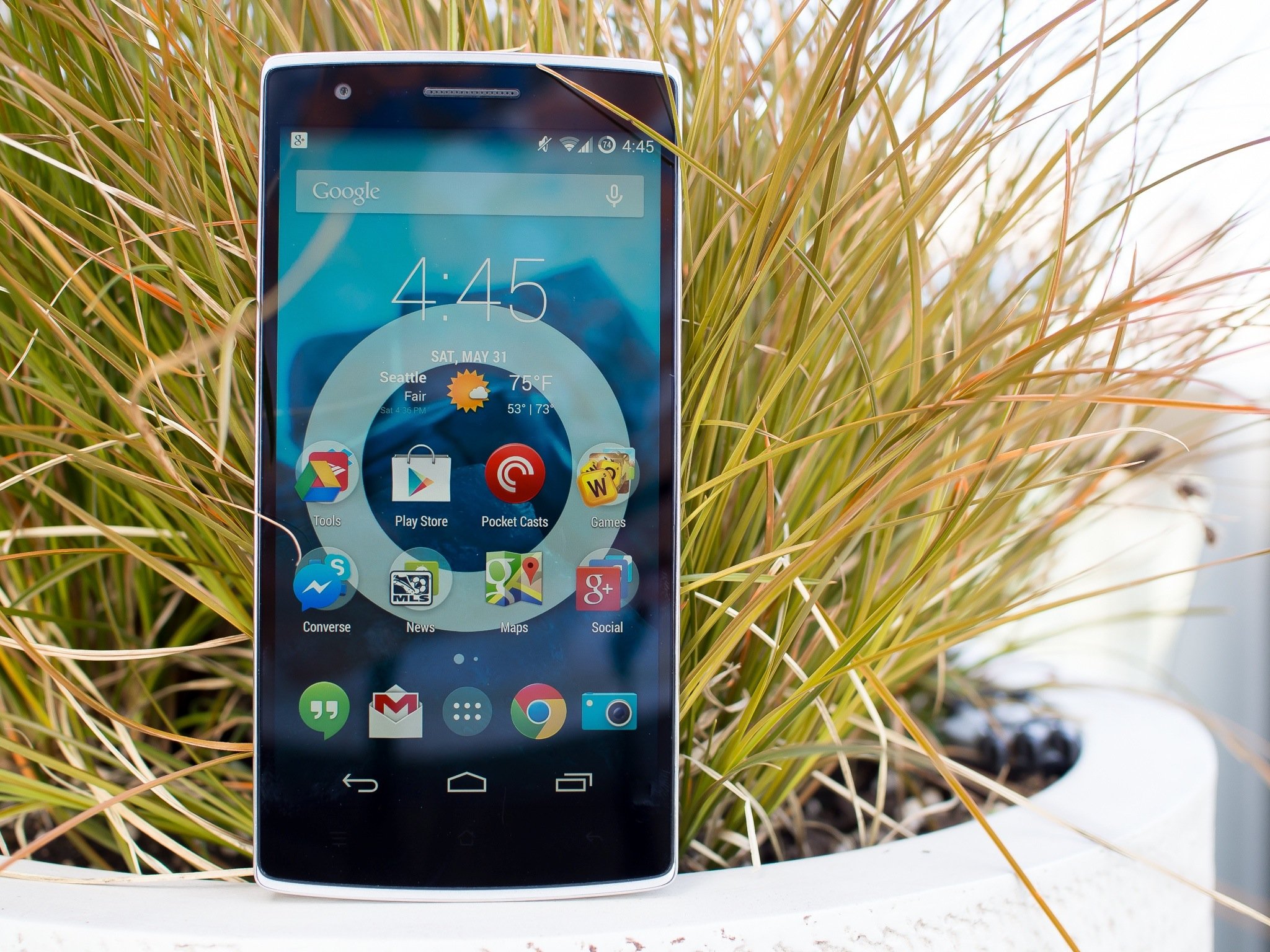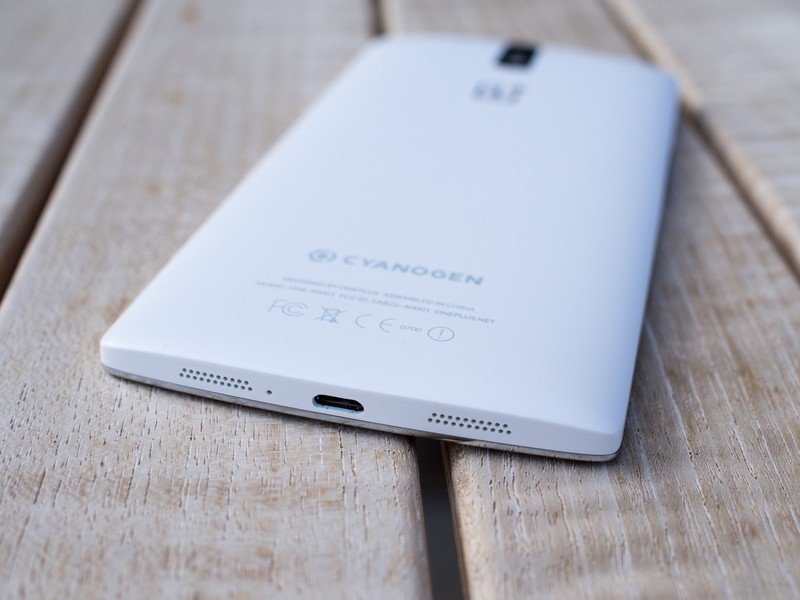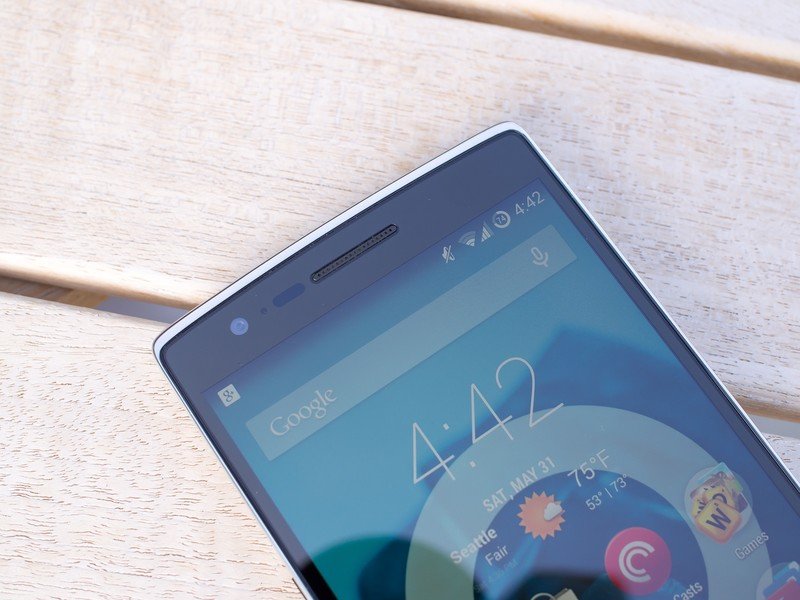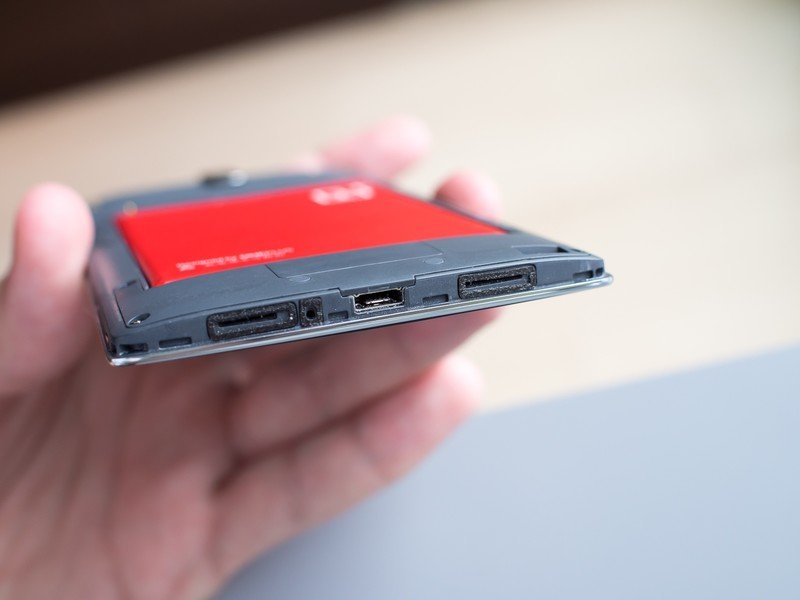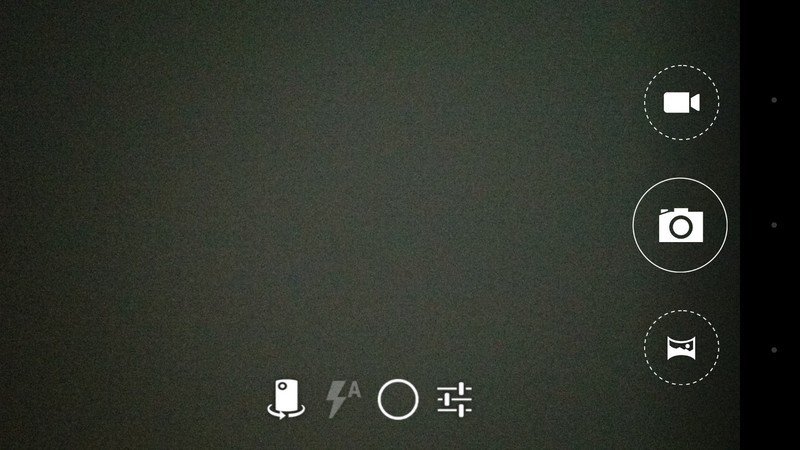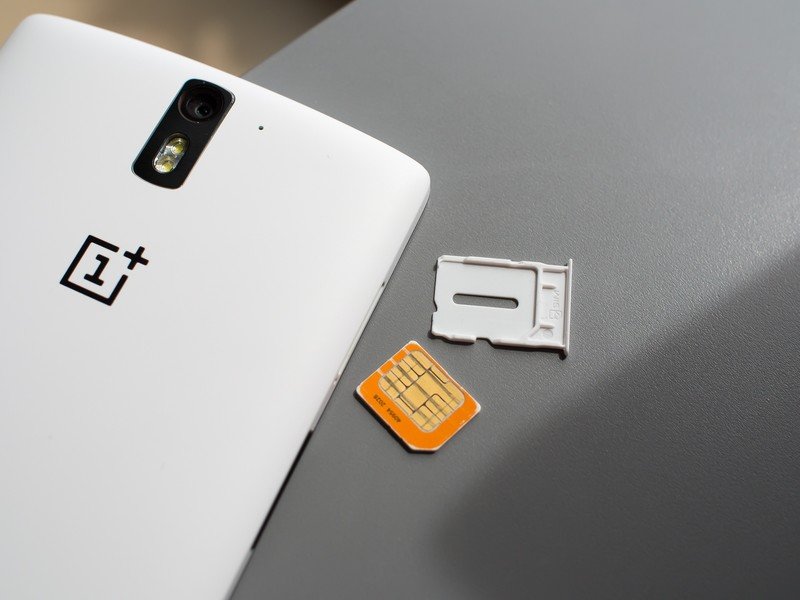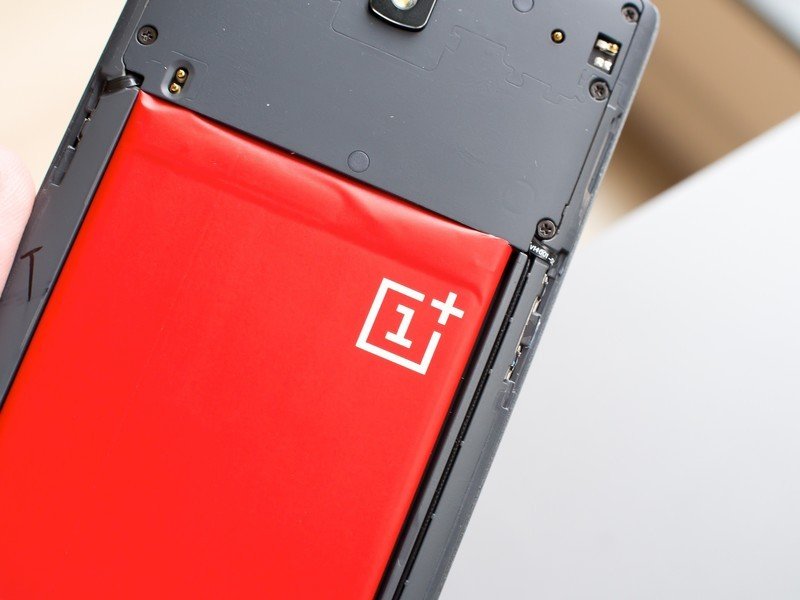A phone with top-notch specs and user experience doesn't have to cost you an arm and a leg. Google has proven this with its last few Nexus devices, Motorola has reinvented itself on the principle, and countless lesser-known Chinese manufacturers have been doing it for years. The latest to launch its company (and an insane marketing hype machine) on this principle is OnePlus with the release of its first phone, the OnePlus One.
Following what felt like an eternity (a few months, in reality) of marketing hype over social media and some hand-picked journalists, OnePlus finally dropped all of the details on the OnePlus One. The company's mantra of "Never Settle" set high expectations for a phone that was also set to have an amazing price, and in the end it surprisingly met many of those lofty goals.
The OnePlus One has industry-leading specs across the board, with a huge high-resolution screen, top-of-the-line processor, 3GB of RAM, 16GB or 64GB of storage, solid build quality, customization-friendly CyanogenMod OS and a genuinely shocking $299 unlocked starting price. That all seems too good to be true, so what's the catch? Well, despite the company's philosophy, no phone is perfect — but the One still has a lot going for it.
About this review
We've been using the OnePlus One for a little less than a month now. We were supplied with a pre-production OnePlus One that has minor hardware differences from the final models that will eventually ship to consumers.
The software, too, is not final and was updated multiple times throughout the review — including a final update to bring it to nearly production software near the end of our evaluation and have been using that build for a couple weeks. If any software features change dramatically after publishing, we will update this review. We used the One on both AT&T and T-Mobile in the U.S. though our time with it, though primarily on AT&T.
OnePlus One video walkthrough
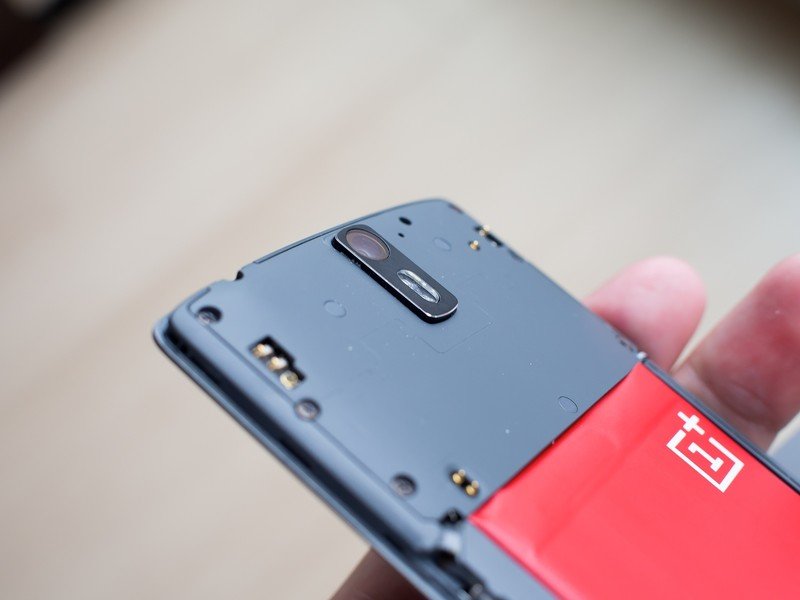
OnePlus One internals
A phone with these specs would usually cost twice as much
Unlocked phone sticker shock officially announced") is a real thing, and it has made many of us willing to compromise for lower internal specs in order to buy a phone we can actually afford. We all want the high-end phones that would normally be palatable at $200 on-contract, but when they're $649 without any agreement, it can just be too much. That's just not the case with the OnePlus One, where you're getting all of the top components on the cheap.
Get the latest news from Android Central, your trusted companion in the world of Android
We all want newest high-end phones, but without a contract they can just be too expensive. But that's not the case with the OnePlus One.
A Snapdragon 801 processor at 2.5GHz, 3GB of RAM, 16/64GB of storage, a 13MP Sony camera sensor, 5.5-inch IPS display at 1080 x 1920, 3100 mAh battery, stereo speakers, 802.11ac Wifi, Bluetooth 4.0, seven-band LTE radio and more, all crammed into a single phone for $299 or $349, depending on your storage capacity choice.
That's just out-of-this-world value for a phone at this point in 2014, and regardless of how OnePlus is capable of releasing a phone with these specs at this price point, it's the end user that benefits the most.
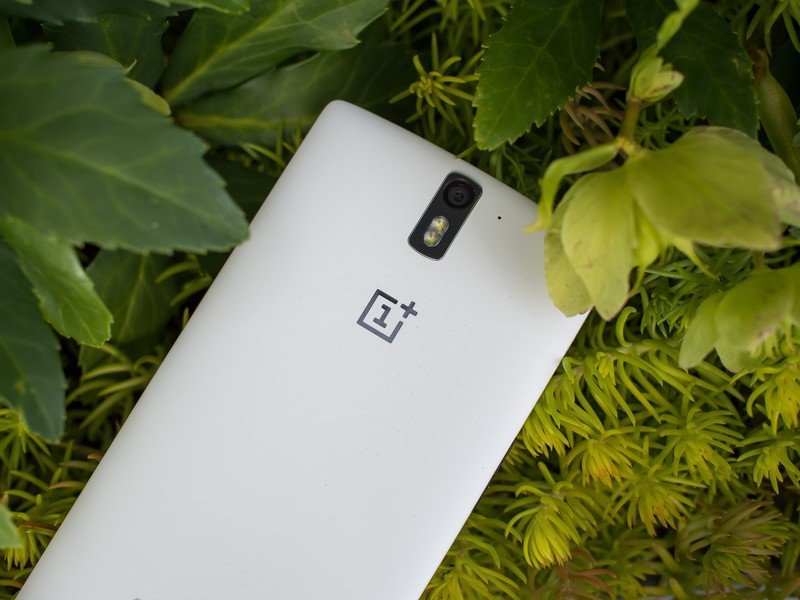
OnePlus One hardware
A simple delivery system for the specs and software
What's more, OnePlus clearly didn't just spend money on the internal specs and leave the exterior design of the One out in the cold — this is an attractive and well-made phone all around.
I think that the words "simple" and "understated" best describe the One's design — in a good way. Nothing flashy here — it's a black slab when viewed from the front, with a chrome plastic rim around the sides that protrudes more on the top and bottom and a lightly curved plastic shell around the rest of the device. I have a special "Cyanogen" white back cover — which is similar to the "silk white" case the 16GB model ships with — but there will also be a "sandstone black" 64GB model and a variety of replacement backs with different colors and materials (I'm particularly interested in the wood and denim options) to choose from.
In any case, the standard plastic backs are solid — so solid in fact that you'll think they aren't meant to be removed at all. They certainly are, although your fingernails may hate you after you spend a good five minutes trying to pry it off. It requires removing the SIM card tray and pulling harder than you'd like to, but luckily there's no reason to remove the back unless you're swapping it for a different style — there's no removable battery or storage under there.
Even with all of the right decisions made here, this isn't revolutionary hardware.
That back cover is a solid piece that covers all sides, back, top and bottom of the device, meeting up snugly with the chrome rim around the screen and offering up simple holes for the necessary ports, buttons and microphones (there are three around the device). This isn't the thinnest phone ever at 8.9mm, but you don't want it to be considering its size. The subtle curve around the back is friendly to the hand, as are the power and volume button placements, limiting (but not eliminating) the awkwardness of reaching around a 5.5-inch phone.
Even with all of the right decisions made here, this isn't revolutionary hardware design. There's no two-tone camera flash, fingerprint scanner, ultra-high resolution display, waterproofing, dedicated two-stage camera key, massive camera sensor, front-facing speakers, heart rate sensor, back buttons or anything of the sort. The OnePlus One is just a phone, basically shaped like every other phone and with absolutely no design flair or features to set it apart from other devices. The biggest thing the OnePlus One has going for it from an external hardware perspective is screen size at 5.5-inches, though that can quickly become a downside depending on who you ask.
But there is something to be said for simplicity. Be it the cost constraints, time limitations or lack of available talent, OnePlus clearly didn't think it could put more interesting hardware features into the One and do them right. For this I can give it some credit — if you don't think you can do it 100 percent, just leave it out. You'll get far more negative comments from including half-assed features than for not having them at all.
The OnePlus One is a great-looking phone, and it's as easy to hold as it is to look at. There's just nothing special here that makes it lust-worthy hardware. The only reaction I ever got to showing this phone to someone was "that thing is huge!" — never a single mention of how nice it looks or how well it's made. I think that says something about what you're getting with the One — this hardware is just a delivery system for bonkers top-end internals and interesting software, and that's about it.
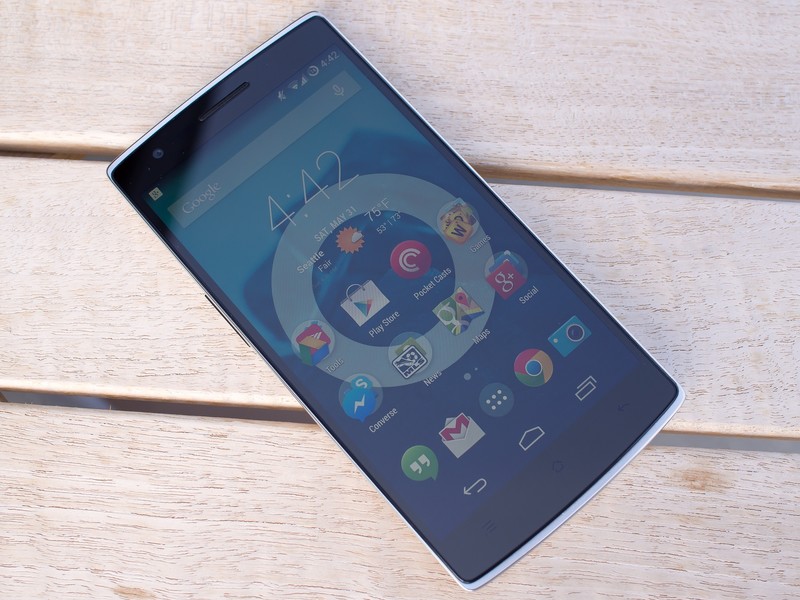
OnePlus One software
CyanogenMod 11S, no flashing required
After making its foray into partnering with hardware vendors to release phones pre-loaded with CyanogenMod with the OPPO N1, Cyanogen Inc. is doing it again in a big way with the OnePlus One. The difference this time around is quite notable — every OnePlus One is shipping with CyanogenMod loaded on the phone out of the box. No special "CyanogenMod Edition" or flashing process required.
The OnePlus One is loaded up with CyanogenMod 11S — the letter suffix denoting that this is a brand new release of the CM software that's specific to the One, which will eventually make its way out to other devices over time. The flagship features of CM 11S are a newly-redesigned theme engine, camera and gallery, backed up by the tried-and-true CyanogenMod experience offering more tweaks and customization options than you can shake a stick at.
If you're a regular user of CM 11 on your current device, the jump to CM 11S on the One isn't going to be a dramatic change. But if you haven't used CyanogenMod in a while — I'm guilty of not keeping up with it as tightly as I used to — you'll be in for a treat with how much this modded version of Android is capable of.
The out-of-the-box experience on CM 11S isn't exactly what you may be expecting if you're used to a stock build of Android. With lots of now-standard CM customizations turned on by default and a customized system-wide theme applied, it's just as visually divergent from stock as you'll find on any phone from Samsung, HTC or LG.
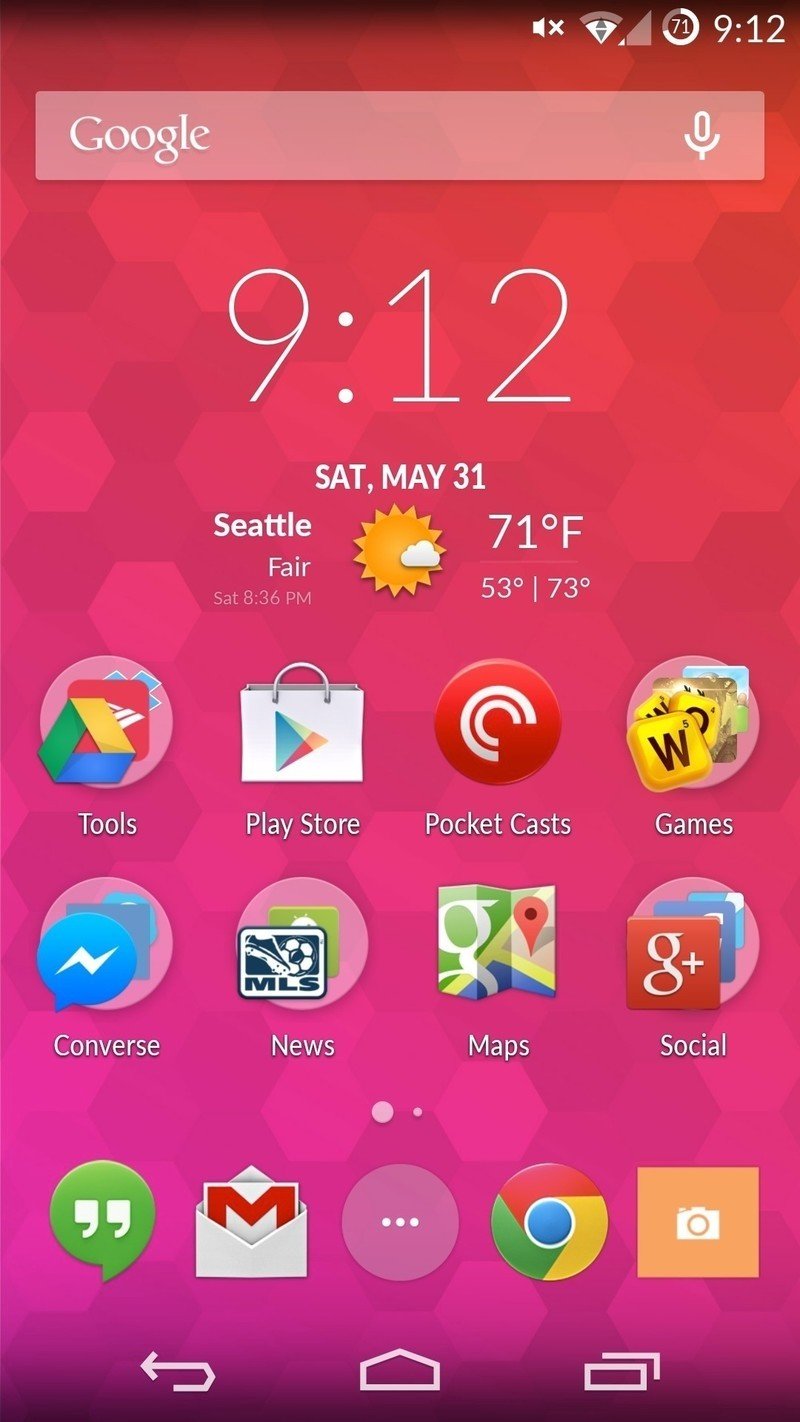

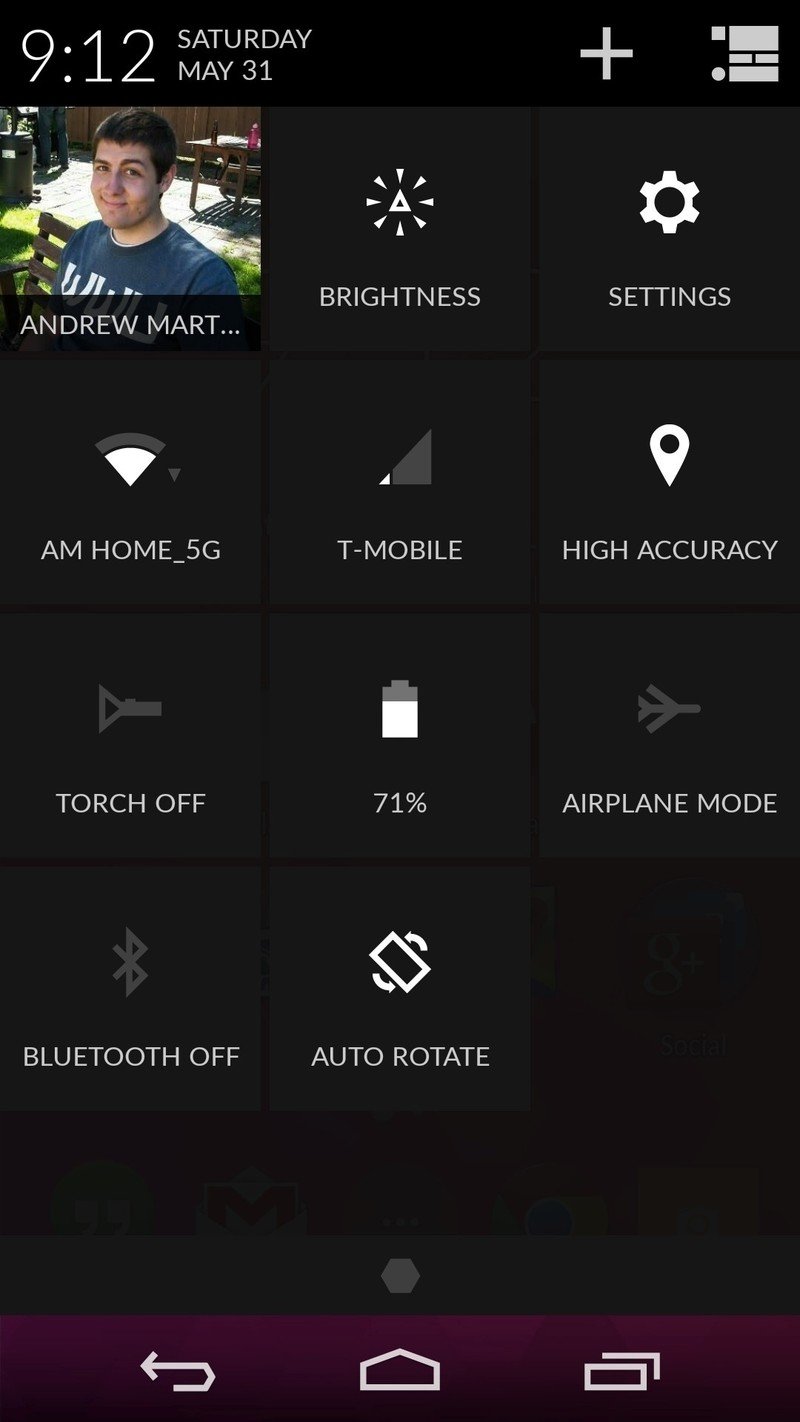
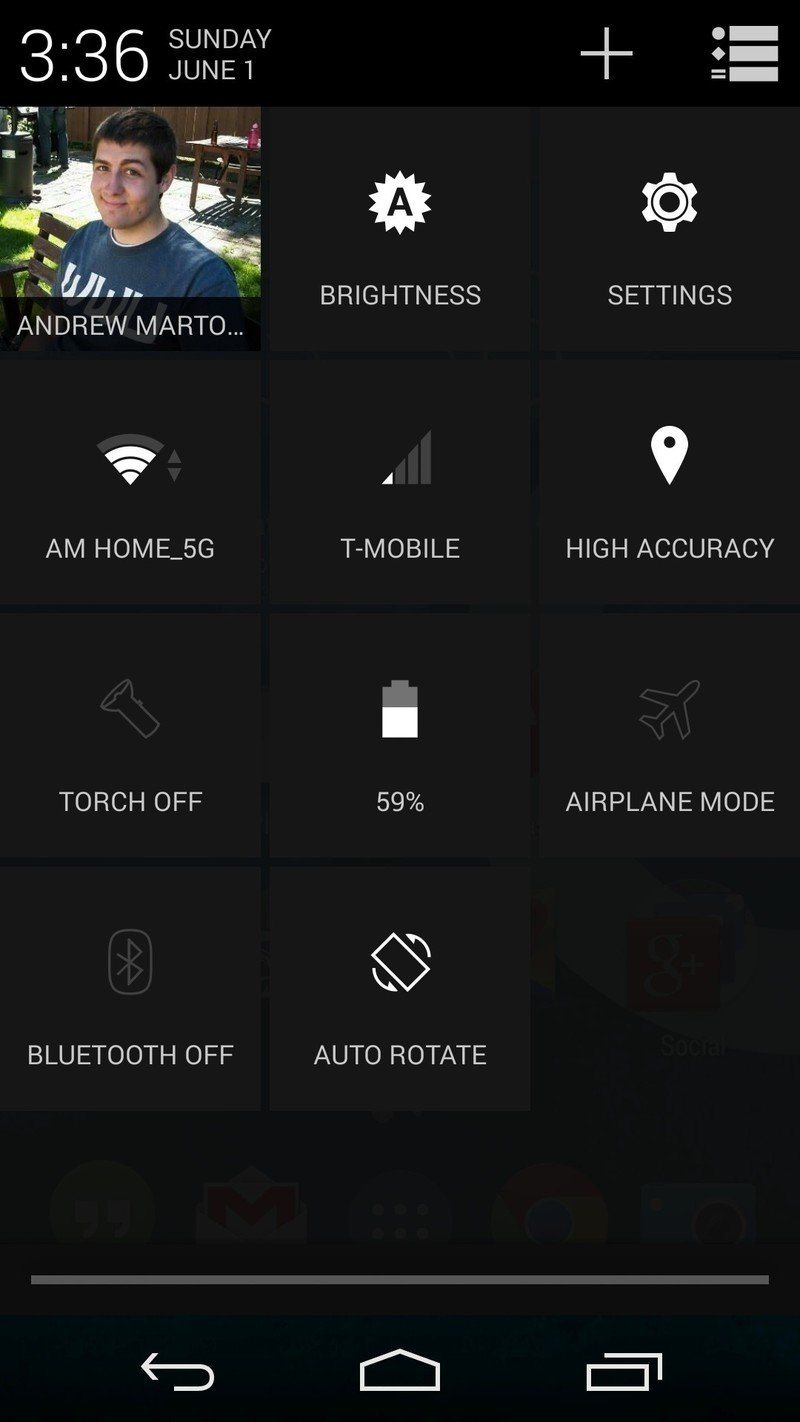
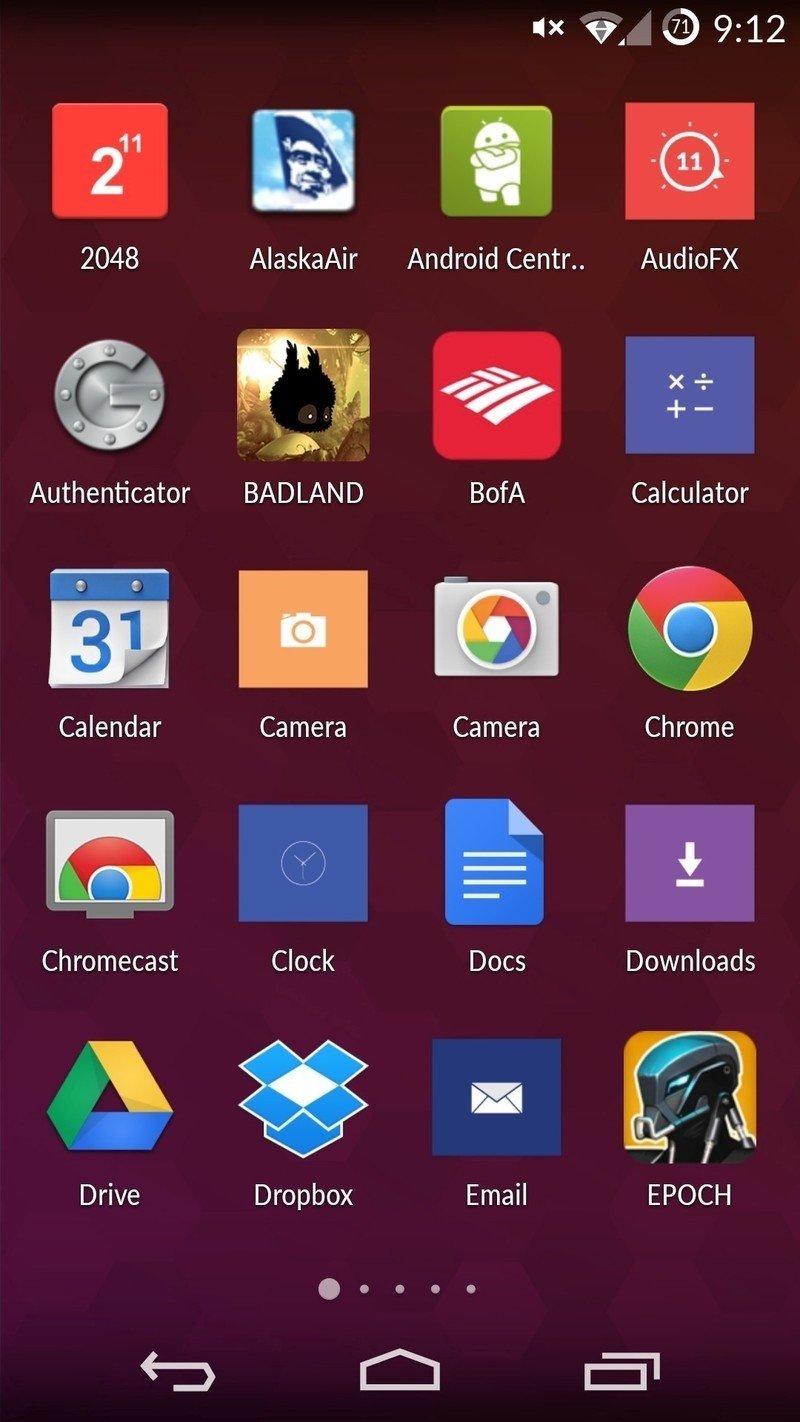
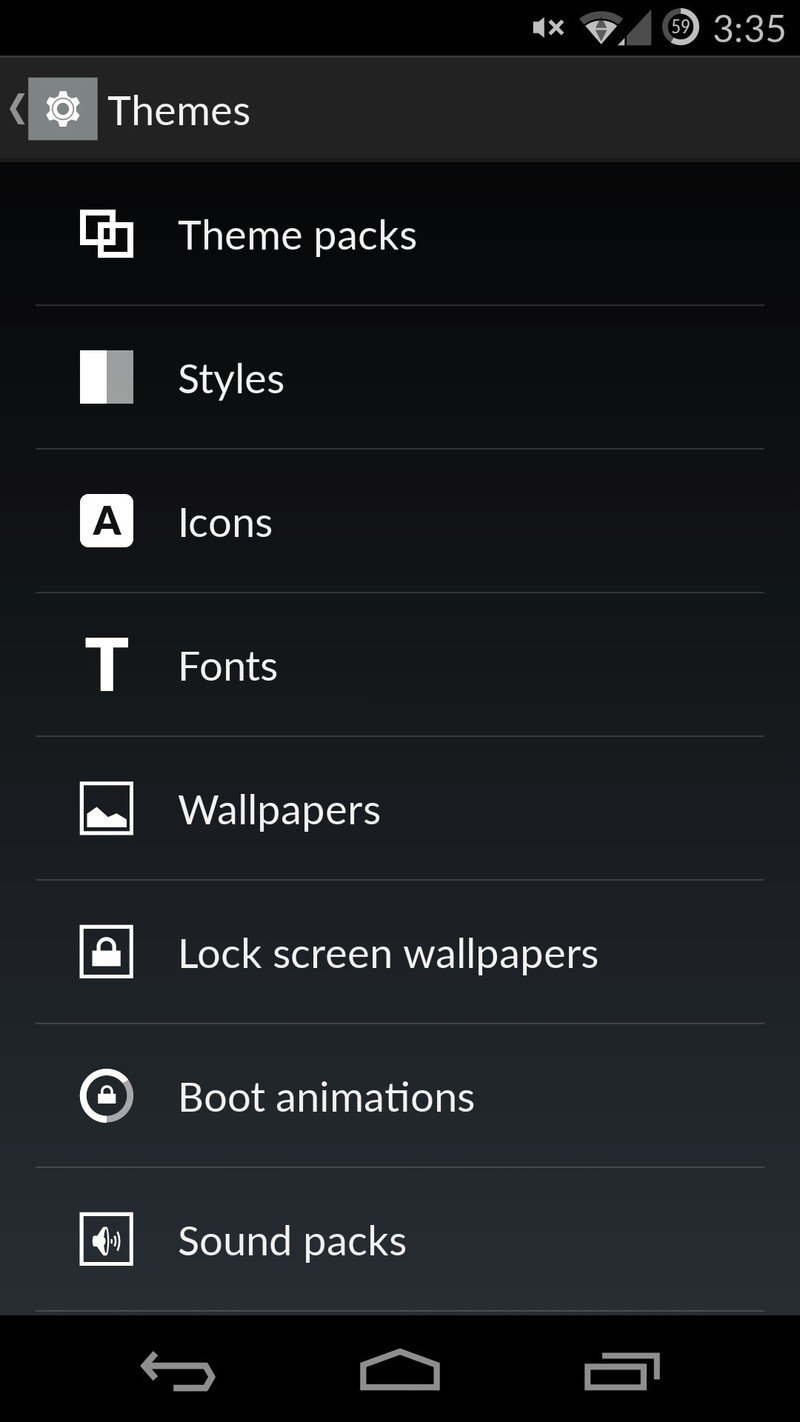
CM is all about customization, both in terms of looks and features, and it's hard to think of an option anyone would want that isn't tucked away somewhere in the settings. You can change every bit of the way the status bar looks, how quick settings are displayed, what buttons go where, how your navigation bar looks, which gestures are enabled (both on the homescreen and when the screen is off), how your lockscreen acts and of course whether you prefer on-screen or capacitive keys.
For the true tinkerer, a quick switch into the developer settings reveals all of your standard options you'd find on a phone, plus a "Performance" section that lets you tinker with the processor, I/O scheduler and memory management, if that's your sort of thing. Naturally if you want to root the phone, it's only a quick USB cable plug into your computer and a few command line entries away.
The new theme engine, which was rebuilt from the ground up in this release, makes it easy to customize the look and feel of your device. You can mix and match different portions — such as icons, wallpapers and boot animations — from each theme you have loaded to get just the right look, and you can even create your own custom themes and load them on your phone if you're willing to get your hands dirty. The hard work that dozens of developers put into this theme engine rewrite will be apparent to end users and theme developers alike.
As a new user, CyanogenMod 11S wasn't the easiest system to get acquainted with.
Being used to a simpler version of Android on the Nexus 5, I actually had to spend a good bit of time turning features off that I wasn't interested in, just as I would on any other manufacturer-customized phone. It took some time for me to get comfortable with diving through the labyrinth of settings menus to accomplish it, too. If I was someone who'd been following the steady progression of adding these features one-by-one to CM over the last few years I'd feel right at home. But as a new user it wasn't the easiest system to get acquainted with.
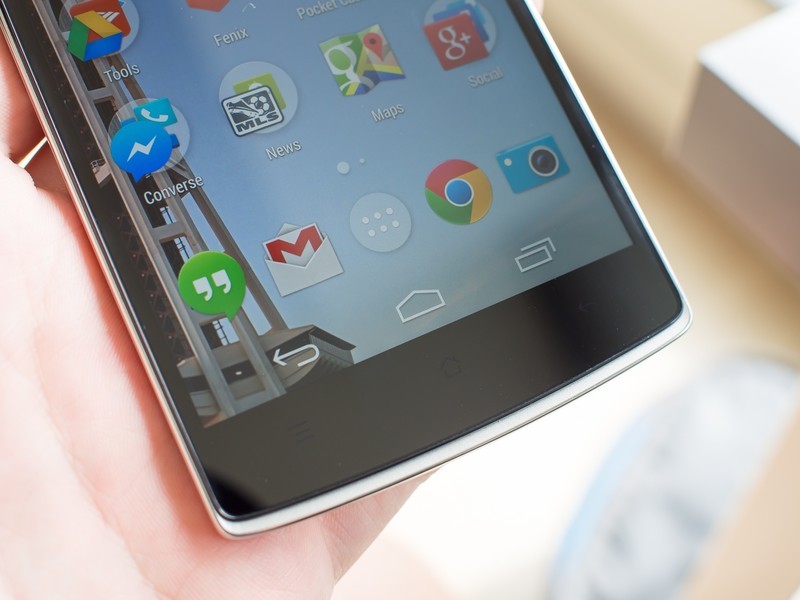
OnePlus One display
There's still nothing wrong with 1080p
OnePlus is doing its best to "wow" everyone with lots of specs and acronyms with the One's display: 1080p, full HD, JDI, IPS, TOL ... the list goes on. Thankfully this isn't all just marketing speak and spec-hyping — the OnePlus One has a superb display.
The marketing speak and specs aren't just hype — the OnePlus One has a really superb display.
The screen is very large at 5.5-inches diagonally, but that's not too large to look great at 1080x1920 resolution at about 400 ppi. And being an IPS LCD panel, viewing angles, color reproduction and outdoor visibility are all top-notch. It's coated with Gorilla Glass 3, which should cut down on the dings and scratches over time as well.
The TOL (Touch On Lens) technology brings that glass closer together with the touch panel, apparently improving touch sensitivity and reducing the chances of shattered screens by 300 percent. I couldn't tell the difference in touch sensitivity, honestly — it worked just like it should.
The sole complaint I have with the display — and this is really nit-picking — is the overall brightness, which is just barely lower than other leading displays. It's only noticeable when you crank up the screen to full brightness and set it next to another phone, but it was never an issue in real-world use. The software can make up for this somewhat with manual adjustment of the automatic brightness controls, which is nice if you want to tweak it.
Though there are fewer acronyms involved, OnePlus is also making note that the One has "stereo" speakers. A pair of speaker grilles flank the USB port on the bottom of the phone, and unlike the Nexus 5 there is actually a speaker behind each one. I'm still hesitant to call two speakers a mere two inches apart "stereo," as there's nothing approaching a stereo sound coming out of there, but it's technically true.
The speakers are loud and clear for listening to calls on speakerphone, watching a quick YouTube video or the occasional bit of podcast listening when you don't have headphones or a speaker nearby. They aren't going to blow you away with in-your-face sound for listening to music or watching a full-length movie, but physics is a limiting factor there. These speakers are loud, but just average quality.
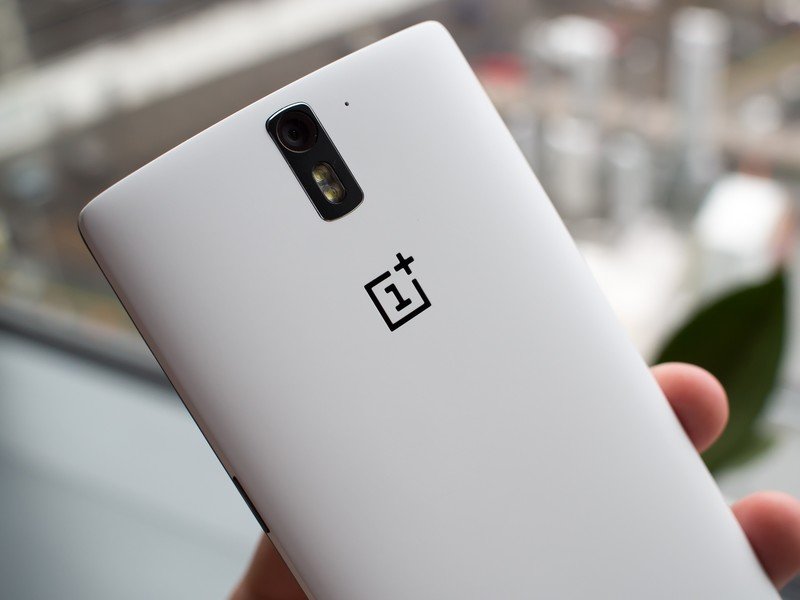
OnePlus One cameras
All of the right pieces, but the puzzle isn't complete
OnePlus was able to source some competent camera hardware for the One, grabbing a Sony Exmor 13MP sensor with an f/2.0 aperture, stacked behind six lenses and supported by a dual LED flash. There are just a couple of omissions, though. As I noted before, that dual LED flash isn't of the two-tone variety, so it's just blasting double the useless light at your subject. There's also a notable lack of OIS (Optical Image Stabilization), which means low-light situations have fewer options for slow shutter speeds, and it takes an extra-steady hand to get clear shots.
Backing up that hardware is a newly-redesigned camera interface in CyanogenMod 11S, along with its latest gallery app exiting beta status. The camera app is a simple remix of the stock Android (that is, before the new Google Camera came about) that's overall easier to get around and manage. A grouping of settings buttons stands guard on the bottom (or side, in portrait) of the interface, showing off nested menus for deeper controls when touched. You can change white balance, exposure, location access and more from this quick settings menu.
The most-used feature of the camera will likely be the ability to quickly switch between different shooting modes, which is done by swiping up or down across the entire viewfinder. A quick swipe moves you from Auto to HDR to Night to a variety of live filters — and you can customize in the settings which ones you want available.
The camera app is a joy to use, especially for when you just want to take a picture rather than fiddle with settings.
The camera app is a real joy to use, especially considering how often many of us just want to pick up the phone and take a picture rather than fiddling with settings. Being able to switch between HDR, Auto and live filters with a simple flick just makes sense, and was something I used on a regular basis. The one thing this camera app was lacking is in the viewfinder — it's 2014 and the phone still shows a 16:9 live preview, but takes 4:3 photos. It makes composition a real hassle, and there's no option in the settings to change the viewfinder or picture aspect.
Photos
It's clear the OnePlus has the right hardware to take great photos, but for some reason the photo output just isn't living up to the full potential of the device. It's not that the phone doesn't take some amazing pictures — it's capable of taking pictures that could come from any leading phone today — but that it's just not a complete package. Let me explain.
The OnePlus One camera was not consistent, shot-to-shot. I would either get a great photo, or a so-so photo.
The first major shortcoming on the One is what I like to refer to as shot-to-shot consistency. When I grabbed the One out of my pocket and went to take a picture, I wasn't entirely sure what I was going to get. Whether I tweaked things and used tap-to-focus or just let it go full-on automatic, I would either get a great photo or a so-so photo.
In order to presumably cut down on dark and grainy pictures, the One often let in far too much light to the point where it completely washes out photos or gives inaccurate white balance. Under perfect conditions it nailed everything just as you'd expect, but deviating from that the camera was clearly just guessing. It's notable to say that I rarely got outright bad shots, but not having consistency in shooting is almost as bad as getting subpar shots all of the time.
Some of the inconsistency of the One's camera comes when deciding whether to take an HDR or Auto photo. On most of my phones I simply leave the camera in HDR (or better yet, Auto-HDR when available) full-time as it provides a nice, punchy and high-contrast look that can make up for some of the shortcomings of using a phone camera. With the One, HDR mode goes dramatically overboard with processing to the point where it makes photos look far too unnatural and unappealing to my eyes.



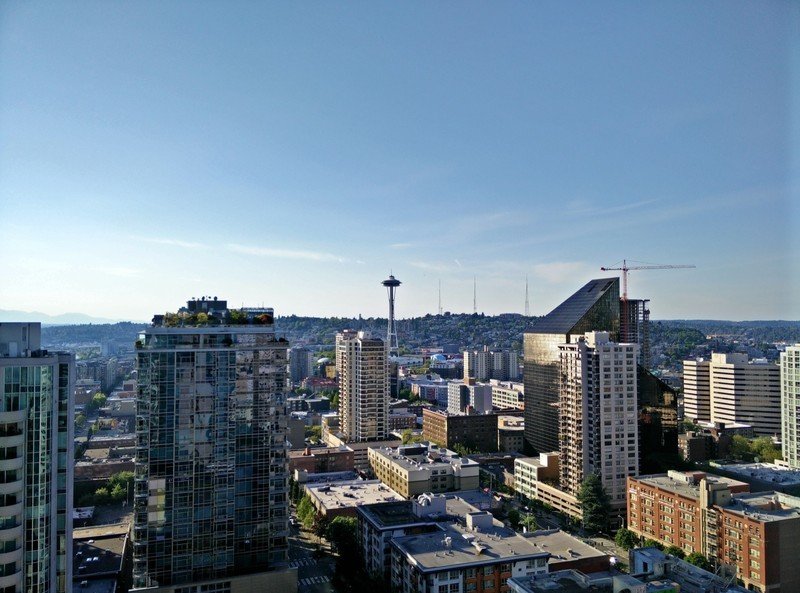

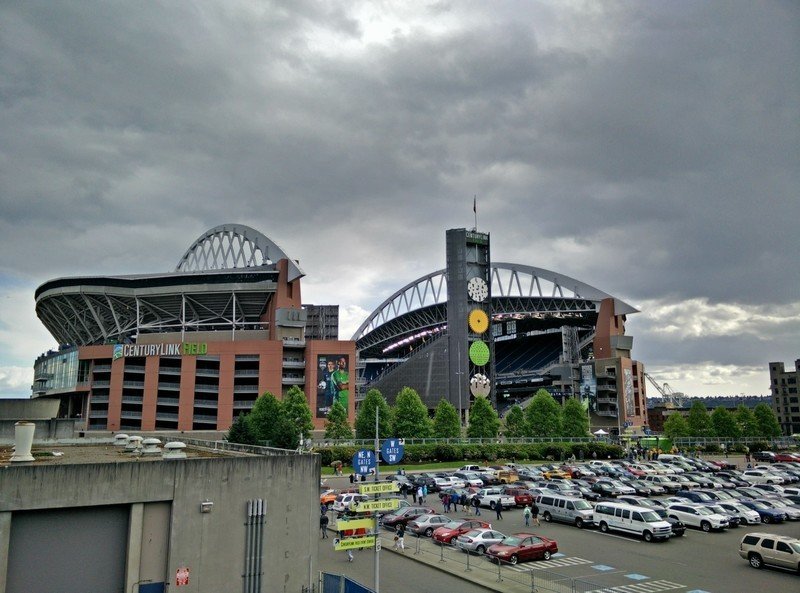






Understanding that the HDR "style" covers a wide range of looks, this camera software just goes too far to be used in even a majority of situations. HDR was a saving grace in less-than-ideal lighting situations, such as around sunsets or inside, often using that over-processing to add much-needed light to the frame. It should also be noted that HDR proved to keep noise down in photos as well. But using HDR mode was no way to get a natural-looking picture — every photo looked like an Instagram filter.
Most of the camera problems can really be ironed out in software over time if Cyanogen decides to make the investment.
The overall inconsistency added to the awkward HDR experience meant that I was stuck moving between Auto and HDR, taking multiple pictures to get the "right" one. HDR mode also annoyingly saves a non-HDR shot when you use it (a setting you can't turn off), but the single-exposure picture captured is completely different than what I'd normally get using Auto mode.
Stepping into night shots, the One again performed below the pack. The lack of OIS means the camera really can't take advantage of long shutter speeds, and instead the camera has to try and crunch the photo data and smooth things out manually. The end result is roughly average night shots, so long as you have a very steady hand and don't attempt to use HDR mode (which only made things worse). The One also misses focus from time to time at night, but that's hard to avoid.
It should be noted that aside from the lack of OIS, all of these problems can really be ironed out in software over time if Cyanogen decides to make the investment. Exposure, menu settings, viewfinder layout and low-light processing can all be fixed — they'll just have to devote the man hours to get it done. If Cyanogen were to release an update or two and improve the camera experience, it'd be enough to bring the OnePlus One from an average camera to a great one.
UHD and high frame rate video
The OnePlus One is capable of recording UHD (often referred to as "4K" or "2160p") video. It is also capable of 60 fps and 120 fps slow-motion video, but only at 720p resolution.
UHD video looks good, but I honestly didn't notice a difference in quality over 1080p. It looked a bit over-saturated to my eyes as well, but I think I'd prefer that to a dull picture. Audio capture during video (from the three microphones) was good, and didn't distort even on a loud street.
120 fps video is only available in 720p or lower resolution, but the settings don't tell you that until you're trying to shoot and get an error message. Just like high frame rate video on other phones, being limited to 720p doesn't look great but the frame rate is smooth and is a neat effect to throw in if you're taking short clips.
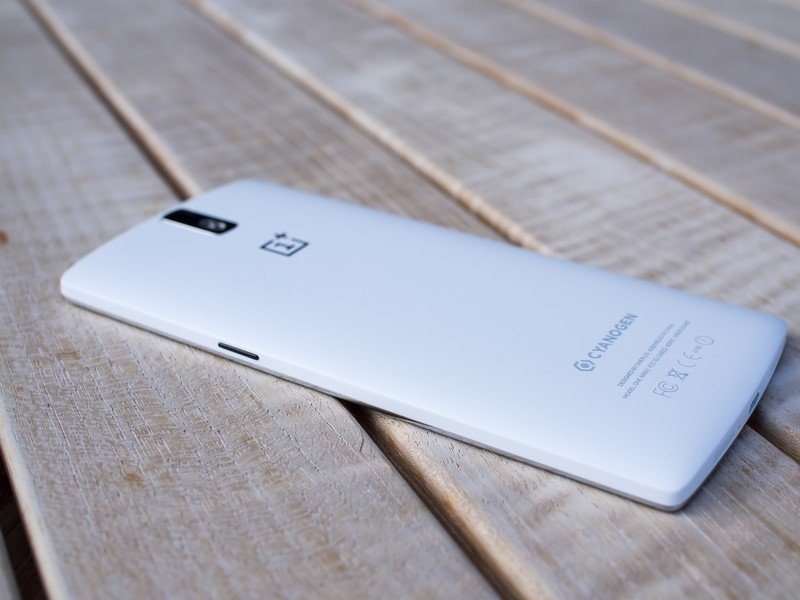
Living with the OnePlus One
Specs are great, but what's it like to use?
I've made it a point to mention the size of this device at a few points in the review, but here's where I get down to it — the OnePlus One is just too large of a phone for me. I already started to feel my hand stretch when I recently spent some time with the Galaxy S5, and the One has just pushed it too far with its 5.5-inch screen, less-than-stealthy bezels and blocky sides.
I already started to feel my hand stretch with the Galaxy S5, and the One has just pushed it too far with its 5.5-inch screen, less-than-stealthy bezels and blocky sides.
The subtle curvature of its back plate and acceptable thickness both help you manage things, but in the end when a phone's too large for me to hold in one hand and type a message, it's likely going to be too much for many people to handle (literally). One of the biggest things I found to help usability is moving to on-screen buttons, effectively shifting the entire screen upward and making your thumb reach less to navigate the interface. This still isn't enough to keep me from wishing that the OnePlus One had a smaller display in the realm of 5-inches instead.
Putting my feelings on extremely large phones aside, the OnePlus One is actually quite a joy to use on a daily basis. The hyped-up internal specs do their job pushing around the interface and apps at break-neck speed that you expect from a 2014 high-end device, and once you dial in CyanogenMod just the way you like it you'll feel right at home.
Mobile data and call quality
One of the big plusses (yes, I went there) is the ability to use the One on pretty much any carrier throughout the U.S. and Europe and get both calls and LTE data without issue. The One has all of the right radio bands available, and I tested it on both AT&T and T-Mobile in the States without a single problem.
Under more scientific testing I found the One to hold a weaker LTE signal than other devices on a consistent basis on both carriers, causing drops off to HSPA+ earlier in poor coverage areas. In normal testing there was no notable difference in data speeds or hand-off times, but if you're constantly in low signal areas it may be something to consider.
Following the latest software update to fix a speaker issue, call quality was loud and clear on both carriers.
Battery life
The OnePlus One consistently offered me a full day's use and ended up with about one-third the battery left.
The One's massive 3100mAh battery isn't user-removable, but that isn't a problem as battery life is more than adequate no matter your usage patterns. This seems to be a situation more of brute-forcing battery life by having a huge cell (a bonus of having a large device) rather than intelligently designing the software for longevity, but whatever the case, the One consistently offered me a full day's use and ended up with about one-third the battery left.
Even on my hardest days, including lots of streaming music, hotspotting and camera usage, I wouldn't ever worry about the battery life on the One. After a few weeks carrying the phone as my only device, I can't recall a situation when I picked it up and was worried enough about the battery life to consider charging it before I left the house, or change my usage to make sure I made it through the day.
It's an extremely liberating feeling that I don't get from every single phone I use, and I wish more devices had this kind of endurance no matter the apps installed or use-case of the owner. This phone doesn't Extreme Power Saving or Ultra Power Saving mode — it just lets you use it how you want, and still doesn't die before you expect it to.
At the end of the day it needs to be charged, and sadly there's no Qi wireless charging included on the OnePlus One. Having made the investment in a couple of wireless chargers for my house and going the last few months without ever plugging in my phone, going back to a wired charger feels like the stone age — and there's no option to add third-party wireless charging capabilities, either.
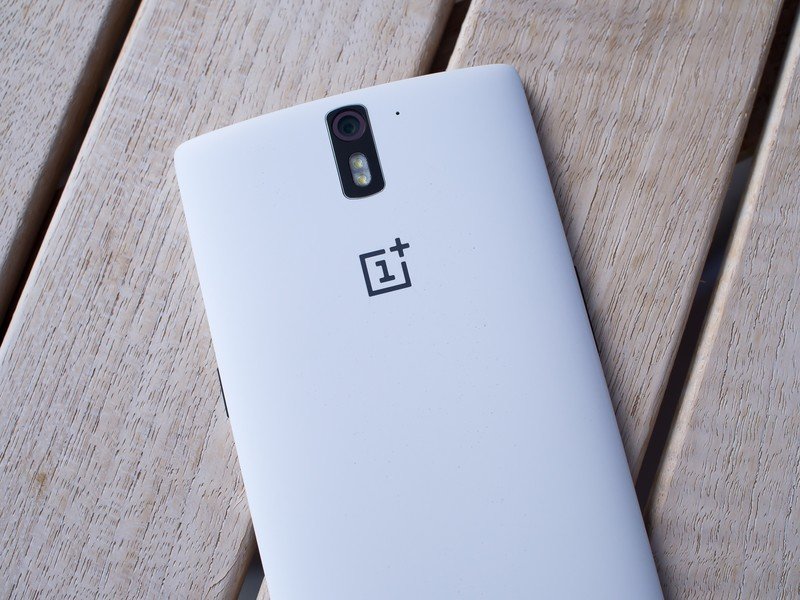
OnePlus One: The Bottom Line
In the end, do you have to settle?
Spending a few weeks with the OnePlus One and getting used to all of its small quirks and issues, I had to keep reminding myself to put things into perspective of the phone's price. Sure it's a bit large, has a few issues with the camera and doesn't pack an awe-inspiring design or features — but it also costs just $299 unlocked and has some of the highest hardware specs available today.
In the $299 unlocked price bracket, The OnePlus One is crushing pretty much everything around it.
Now of course that doesn't really fit into the Never Settle philosophy behind OnePlus, but no phone is going to be everything to everyone, no matter what the advertising claims. If the One was $499 instead, would it have all of these problems fixed? Maybe, but then the value proposition starts to be a little less clear. OnePlus may have dug itself into a hole with its marketing here, trying to make the One seem like the next great thing when really it's just another phone.
And that's okay, because the One is competing at a price point with a bunch of other phones that are just phones, too, and in this arena it's crushing pretty much everything around it. It offers industry-topping specs, solid hardware, a robust and customizable software experience and above-average camera in a land of cheap phones that really can't match it.

Andrew was an Executive Editor, U.S. at Android Central between 2012 and 2020.
